Shipping costs from China are influenced by a variety of factors, including the time of year, fuel prices, shipping routes, and demand for container space.
In 2024, the sea freight industry has observed fluctuating prices due to economic conditions and changes in supply chain dynamics.
A standard 40-foot container, known in the industry as a forty-foot equivalent unit (FEU), is often not charged at double the rate of a twenty-foot equivalent unit (TEU), despite having double the capacity.
It’s commonly noted that the cost for shipping a 40-foot container can be merely 20-25% more than its 20-foot counterpart.
Current shipping rates show that prices have decreased compared to previous years, yet they remain subject to rapid changes.
As an example, historical data indicate significant week-to-week fluctuations, such as a 35% decrease to $3.91/kg on routes from China to North America.
International rates charts also show sharp increases in early 2024 for routes like Shanghai-Rotterdam, with jumps of over 100% within a single week. These rates provide businesses and individuals with a critical benchmark for budgeting their logistics expenses.
Understanding Container Shipping
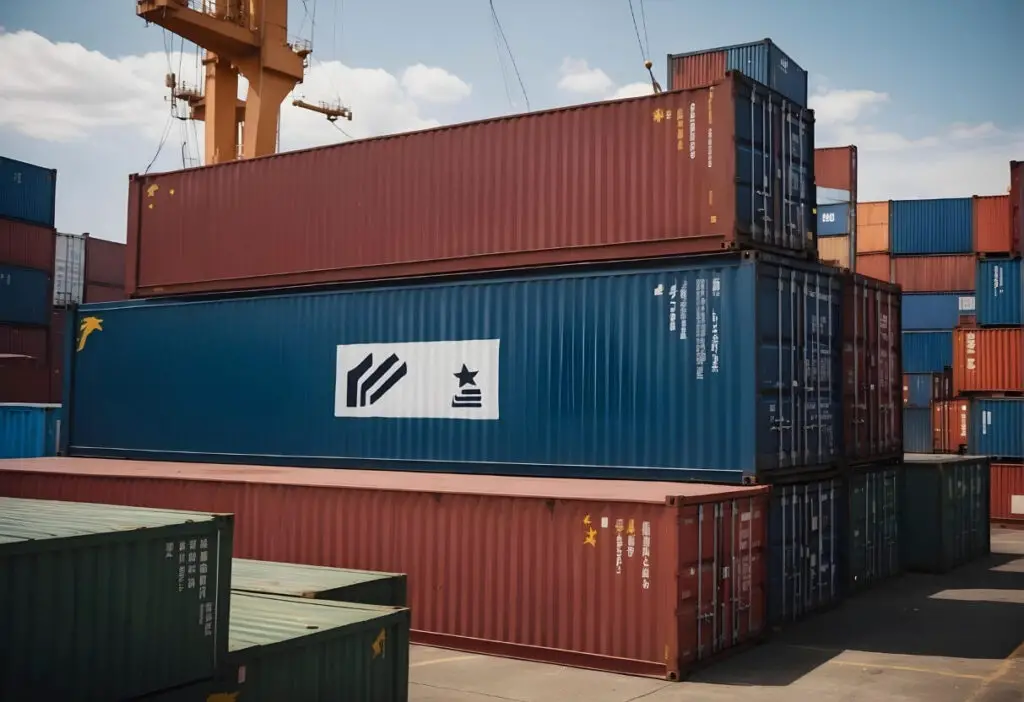
Container shipping plays a pivotal role in international trade by enabling the efficient and cost-effective transportation of goods over long distances.
This section will explore the significance of the practice in global commerce and the variety of containers utilized within the industry.
The Role of Container Shipping in Global Trade
Container shipping is a linchpin in global trade, connecting markets such as China and the US with a steady flow of goods.
These two nations, among others like Australia, rely heavily on ocean freight for the import and export of commodities.
Container ships transport a vast array of products across major ports, with container shipping rates being influenced by supply and demand dynamics.
The standardized nature of shipping containers simplifies loading processes, optimizes vessel capacity, and lowers overall ocean freight rates.
The ability to ship substantial volumes of cargo makes it an indispensable asset for businesses looking to engage in international trade.
Rates for shipping vary according to the size of the container and the route taken.
A 40ft container can usually carry the equivalent of 22 standard pallets in a Full Container Load (FCL), as opposed to sharing space in Less than Container Load (LCL) shipments.
This distinction between FCL and LCL is crucial as it affects not only the cost but the speed of shipping.
Types of Containers and Their Uses
The industry primarily uses two standard container sizes: the 20ft container and the 40ft container.
The former is often favored for smaller shipments or less volume-heavy cargo, while the latter is preferred for larger shipments, allowing businesses to maximize their shipping volumes.
These measurements align with standard pallets, making them a preferred choice in global logistics.
Table: Common Container Dimensions and Uses
| Container Size | Typical Use | Volume Capacity |
|---|---|---|
| 20ft Container | Smaller cargo, less volume-heavy shipments | 33.2 m³ (1,172 ft³) |
| 40ft Container | Larger shipments, standard for most cargo | 67 m³ (2,390 ft³) |
Additionally, specialized containers, such as refrigerated units, are available for the transport of perishable goods.
These variations cater to the specific needs of different types of cargo, ensuring that items like food products or pharmaceuticals maintain their quality during transit.
The choice of container type can significantly affect container shipping costs, with specialty units often incurring higher fees due to their added features and benefits.
Cost Factors for Container Shipping
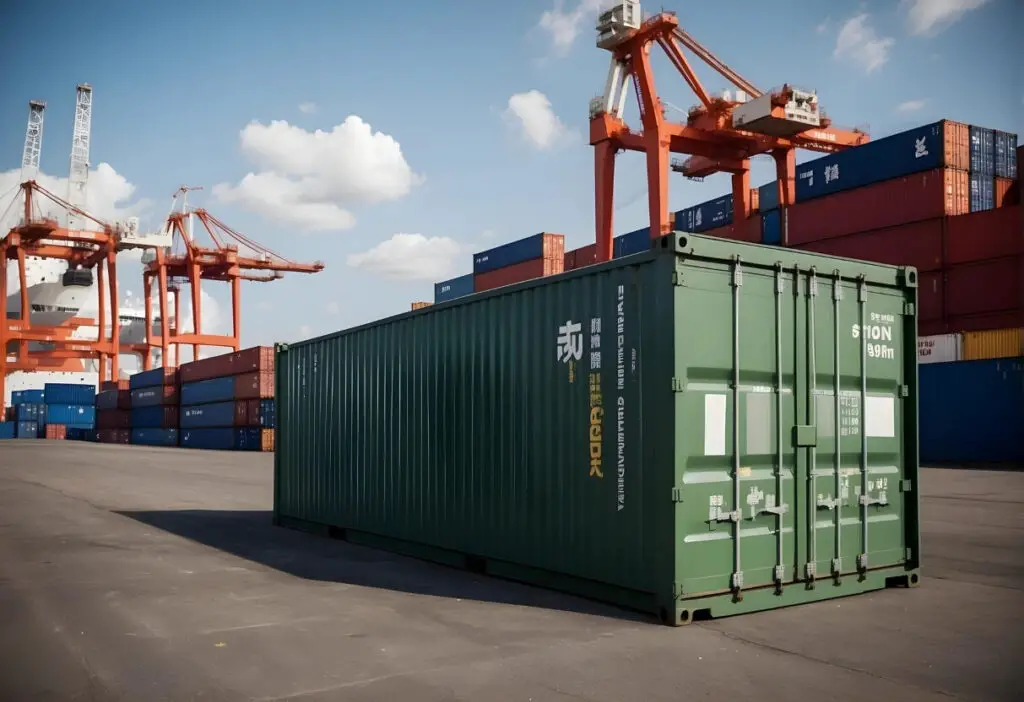
The price of shipping a 40-foot container from China is not constant, influenced by a range of variables from the mode of transport to the laws of supply and demand.
Variables Affecting Shipping Rates
Shipping rates are contingent upon several factors, which can cause the cost to increase or decrease significantly. Key elements include:
- Distance: The further goods need to travel, the higher the cost. Shipping from China to different parts of the US will have varying rates.
- Mode of Transport: Container ships are typically more economical than air freight, with land transport playing a role in final delivery costs.
- Supply and Demand: Seasonal fluctuations can raise prices; peak seasons often see a spike in rates due to higher demand.
- Container Size and Type: Standard containers are 20 and 40 feet, but prices change for special types such as refrigerated units.
| Factor | Influence on Rates |
|---|---|
| Distance | Direct increase |
| Mode of Transport | Varies (sea < air < land) |
| Supply and Demand | High demand → higher rates |
| Container Size/Type | Larger/special → higher cost |
Understanding Freight Rates
Freight rates are multifaceted and reflect more than just the costs of physically transporting goods across the ocean. They encapsulate a spectrum of expenses:
- Port Fees: Both the port of origin and the destination port levy charges.
- Fuel Costs: Fluctuating fuel prices can impact ocean freight rates.
- Currency Exchange Rates: International shipping deals with multiple currencies.
- Economic Factors: Political stability and economic policies of countries affect rates.
| Aspect | Description |
|---|---|
| Port Fees | Fixed charges at ports |
| Fuel Costs | Variable, affects rates |
| Currency Exchange | Influence by market rates |
| Economic Factors | Political/economic stability |
By considering the complexities of container shipping, entities involved can better predict and navigate the fluctuating nature of freight costs.
Shipping Routes from China

China’s maritime export landscape is integral to global trade, with vast networks of shipping routes spanning from its coastal hubs to ports across the world. These routes are essential for transporting a variety of goods in containers, including the commonly shipped 40-foot containers.
Major Chinese Ports for Export
- Shanghai: The Port of Shanghai, not only a vital trade hub for the bustling city but also the world’s busiest container port, spearheads exports with its extensive infrastructure.
- Shenzhen: Ranked among the top, the Port of Shenzhen encompasses multiple smaller ports around the city, playing a leading role in southern China’s maritime export.
- Ningbo-Zhoushan: This port, near the East China Sea, is known for its deep-water berths allowing the passage of heavy vessels.
- Guangzhou: Located in the South China Sea, Port of Guangzhou is crucial for trade in the Pearl River Delta.
- Qingdao: Facing the Yellow Sea, it’s a strategic export point particularly for northern China.
- Tianjin: As the largest port in northern China, Tianjin serves as the maritime gateway to Beijing.
- Dalian: In the Liaodong Peninsula, it is an important oil and container port.
- Xiamen: Found on the southeastern coast, Xiamen plays a key part in the trade across the Taiwan Strait.
- Yingkou: Even though less known, the Port of Yingkou is gaining importance due to its connectivity to northeast China.
Popular Destination Ports
- Los Angeles: Holding the title as the busiest port in the United States, the Port of Los Angeles is a primary entry point on the West Coast for goods shipped from China.
- New York: The Port of New York and New Jersey is the largest on the East Coast, serving as a major receiving point for Chinese exports.
- Canada: Key Canadian ports like Vancouver on the West Coast and Halifax on the East Coast are pivotal in North American trade with China.
- Hong Kong: Although technically part of China, Hong Kong operates a significant independent port that facilitates trade between China and a myriad of international markets.
- United Kingdom: Ports such as Felixstowe and Southampton are among the UK destinations for cargo from China.
- United Arab Emirates: Jebel Ali in Dubai, the largest port in the Middle East situated in the UAE, is a hub for cargo en route to and from China.
- Virginia (VA): The Port of Virginia, a growing port with deep channels, accommodates the large 40-foot containers from China to the US East Coast.
- East and West Coasts: The United States’ bifurcated coastal ports each offer unique routes, with the East Coast stretching up to regions such as the European Union, and the West Coast ports serving as gateways to Asia-Pacific economies.
Calculating Costs for a 40ft Container from China
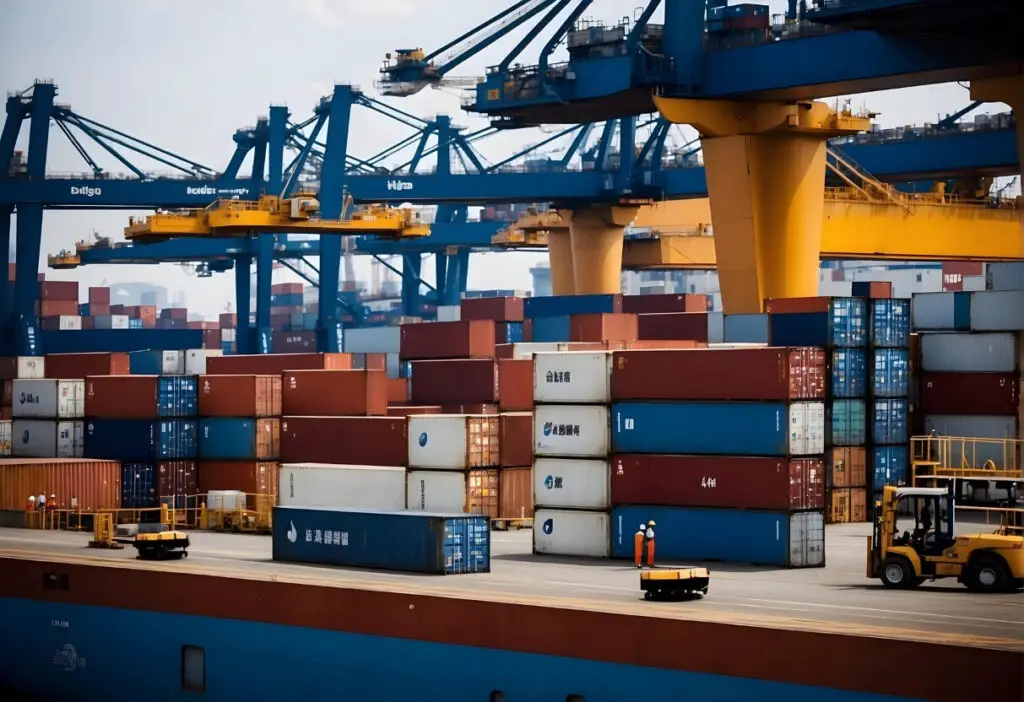
Before diving into the specifics, it is essential to understand that several factors influence the cost of shipping a 40ft container from China, and various tools like shipping calculators can provide estimates.
Factors Influencing Container Shipping Costs
Several elements affect the ocean freight rates when shipping a 40ft container from China. These elements include:
- Container Size: Standard container dimensions, typically 20ft and 40ft, with the latter having a higher cost due to greater volume.
- Distance: The length of the shipping route plays a crucial role, with longer routes incurring higher costs.
- Volume: A 40ft container provides a volume of 2,560 cubic feet, affecting the overall cost.
- Freight Rates: These rates are influenced by market demand and can fluctuate regularly.
- Door to Door: Including additional services such as door-to-door delivery increases the cost.
Example – Freight Costs Influencers Table:
| Factor | Description | Impact on Cost |
|---|---|---|
| Container Size | Larger containers like a 40ft increase cost. | High |
| Distance | The shipping distance from China to the destination. | Variable |
| Volume | The container’s capacity, which is substantial for a 40ft. | High |
| Freight Rates | The current market rate for container shipping. | Variable |
| Door to Door | Additional logistics services from origin to destination. | Increases Cost |
Estimating Costs Using Shipping Calculators
Shipping calculators are essential tools provided by platforms like Freightos for estimating the cost of shipping a container. These calculators take into account the above factors to provide a rough estimate of the shipping cost.
- Calculator Usage: Enter specifics such as container size, origin, and destination to receive an instant quote.
Example – Cost Estimation Table (Hypothetical Data):
| Input | Detail | Estimated Cost (USD) |
|---|---|---|
| Container Size | 40ft Container | – |
| Shipping Distance | Shanghai to Los Angeles | – |
| Freight Rate | Based on current market rates | – |
| Volume | 2,560 cubic feet | – |
| Door to Door | Inclusive of additional costs | – |
It’s important to note that actual quotes may vary based on current market conditions and additional fees not accounted for in online calculators.
Timeframe for Shipping a Container
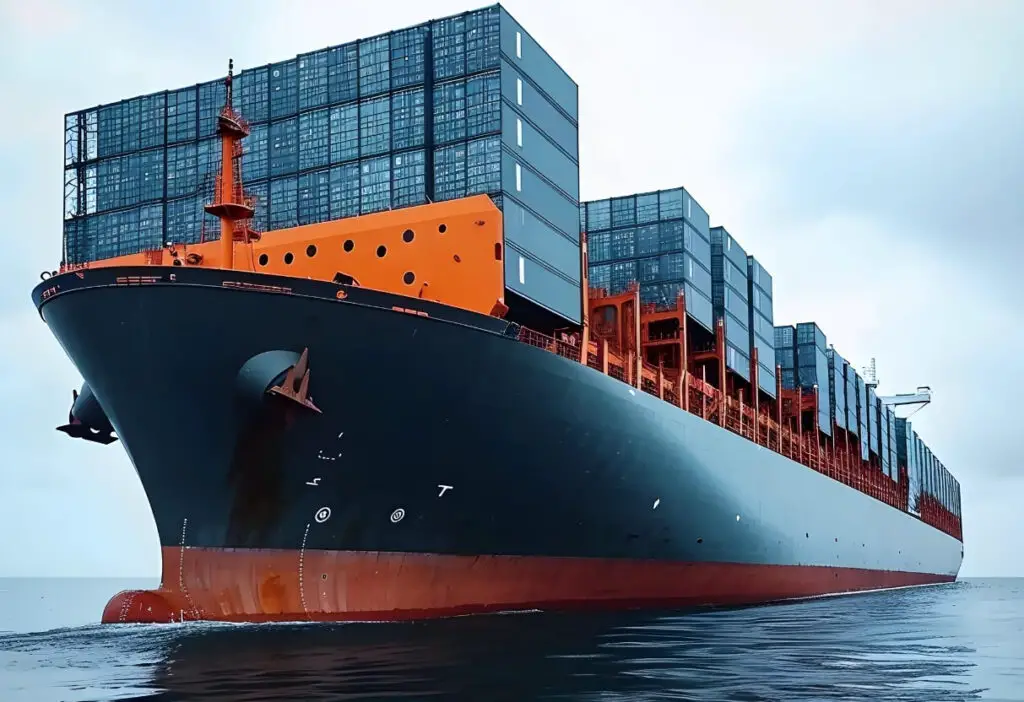
When shipping a 40ft container from China, times can vary significantly based on destination and current logistical factors such as supply and demand.
Transit Times and Scheduling
Shipping a 40ft container from China to Los Angeles typically takes approximately 14-30 days. However, the journey to New York can extend this timeframe to 30-40 days. Schedules are affected by multiple factors, including vessel availability and the specific port of departure in China.
| Destination | Estimated Transit Time |
|---|---|
| Los Angeles | 14-30 days |
| New York | 30-40 days |
| Sydney | 33-45 days |
| Auckland | 35-50 days |
Impacts of Shipping Delays and Shortages
Fluctuations in supply and demand can have serious repercussions on shipping times. Shortages in container availability or congestion at ports can lead to delays. These logistical challenges emphasize the importance of planning in mitigating the impact of unpredicted setbacks in shipping timelines.
Additional Considerations in Container Shipping
When shipping a 40-foot container from China, there are pivotal decisions including whether to use FCL or LCL options, as well as understanding the intricacies of cargo insurance.
Choosing Between FCL and LCL Options
Full Container Load (FCL) is ideal when shipping a large volume of goods sufficient to fill a 40-foot container. FCL not only secures the entire container for one shipper’s cargo but is also typically faster, as the container moves directly to the destination without the need for consolidating goods from various shippers.
In contrast, Less than Container Load (LCL) might be a cost-effective solution when the shipment does not occupy the full space of a 40-foot container. It allows shippers to share container space with others, paying only for the volume they occupy. However, this option can entail additional handling as the cargo is consolidated and deconsolidated, potentially leading to longer shipping times.
The Importance of Cargo Insurance
It is crucial to obtain cargo insurance for shipments from China to protect against loss or damage. Ocean freight carries inherent risks, and while carriers have limited liability, such protections are rarely sufficient to cover the full value of household goods and other merchandise in transit. Insurance is a safeguard for shippers, ensuring that they are financially protected throughout the journey.
Logistics Partners and Shipping Companies
Selecting the right logistics partners and shipping companies is crucial when importing a 40 foot container from China. These entities ensure the effective transport of goods to the USA and can impact cost, timing, and the overall success of shipment.
Evaluating Freight Forwarders and Carriers
Freight forwarders act as an intermediary between the shipper and various transportation services. Companies like COSCO and MSC are well-established freight forwarders known for their capability to handle significant volumes and complex shipments through a network of container ships. Businesses must assess the freight forwarder’s experience, especially with routes from China to the USA, and their ability to offer door to door shipping service.
- Experience: Evaluate the number of years in operation and regions served.
- Services: Analyze if they provide comprehensive services, including customs brokerage.
Freight carriers such as OOCL focus on the physical transportation of goods. Evaluating a carrier’s fleet size, reach, and reliability of their vessel schedules is essential.
| Criteria | Description |
|---|---|
| Fleet Size | Refers to the number of ships a carrier operates and their capacity. |
| Global Reach | Indicates the geographic coverage and the ability to handle international shipping lanes. |
| Schedule Reliability | Measures how often a carrier’s ships arrive on time. |
Contractual Agreements and Service Levels
When entering into agreements with shipping companies, the terms should be clear, explicit, and tailored to your specific requirements. MSC and COSCO often offer various service levels at different price points; businesses should ensure they understand the distinctions and choose appropriately.
- Pricing Tiers: Different levels of service come with varying costs. For example, premium services may include faster transit times or additional security.
- Service Guarantees: Seek clarity on what guarantees the carrier provides, such as space on a vessel or timeline adherence.
An examination of contractual terms needs to be meticulous, paying particular attention to penalties for delays and damage liability.
Businesses must consider these factors carefully to select the best logistics partner for shipping from China to the USA. Proper evaluation of both the freight forwarders and carriers ensures a balance between cost-efficiency and timely delivery.
Global Shipping Lane Dynamics
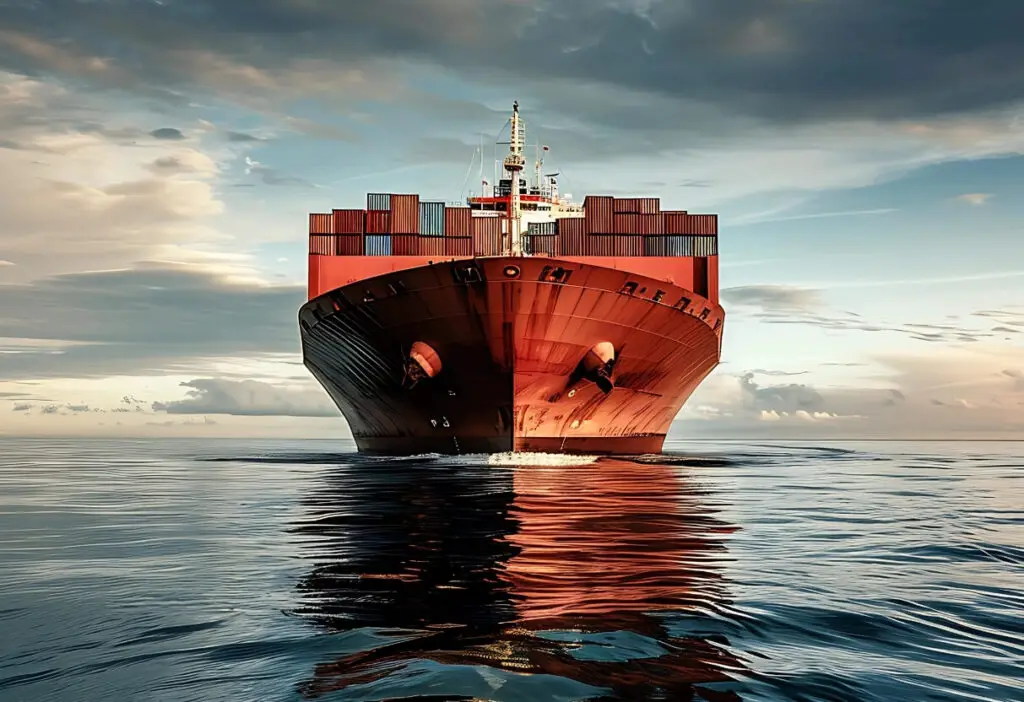
The dynamics of global shipping lanes encompass complex interactions between trade routes, market trends, and geopolitical events. These factors significantly impact the cost of shipping containers, with attention especially on the busy lanes between China and various international ports.
Analyzing Trade Lanes and Market Trends
Trade lanes are crucial for understanding the flow of goods and container shipping rates. For instance, the shipping lane from China to the United States is one of the busiest in the world, notably impacting the Port of Los Angeles. A close look at numeric data reveals fluctuations in rates due to various market trends such as peak seasons or shifts in supply and demand. Additionally, European ports like Hamburg and Marseille also play a key role in the market dynamics, with rates varying according to the volume of trade and economic activities.
Notable Ports and Average Container Costs:
| Port | Destination | Average Cost |
|---|---|---|
| Shanghai | Los Angeles | $1,400 |
| Ningbo | Hamburg | $2,000 |
| Yantian | Marseille | $2,100 |
| Qingdao | Jebel Ali | $1,900 |
| Tianjin | Dublin | $2,200 |
Trend Analysis:
- Peak seasons often drive up costs due to increased demand.
- Economic policies can influence trade volume and rates.
Adapting to Geopolitical and Economic Changes
Geopolitical events and economic changes can lead to abrupt adjustments in global shipping lanes. For example, a change in trade regulations by the United States or China could affect the volume of containers moving through ports like Manila or Mumbai. Similarly, political instability in regions like Nigeria or Israel can lead to rerouting of shipments, thus altering supply and demand dynamics.
Key Factors Influencing Shipping Rates:
- Tariffs and Trade Agreements: These can directly influence import and export volumes, thus affecting shipping costs.
- Economic Stability: Countries like Germany and France, with stable economies, tend to have more predictable shipping rates, while those experiencing economic upheaval might see more volatility.
Understanding these dynamics helps stakeholders in the shipping industry to navigate the complexities of international trade and logistics.
